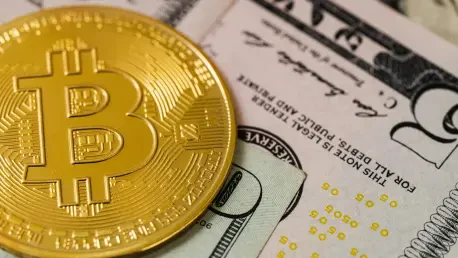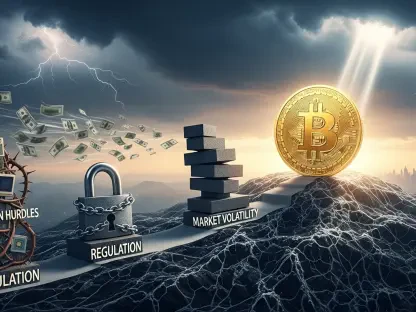Recent remarks by former President Donald Trump concerning potential Federal Reserve rate cuts have sparked increased attention on the interplay between political discourse and financial markets. His comments have created waves of speculation about the possible influence on Federal Reserve policy decisions, subsequently impacting the stock and crypto markets. Monetary policy adjustments can have profound effects on asset valuations, and Trump’s advocacy for reduced rates reflects his historical preference for monetary easing. For investors, navigating this landscape requires a nuanced understanding of the interconnectedness between political narratives and market dynamics.
Trump’s Advocacy For Rate Cuts
Implications Of Monetary Easing
Trump’s lighthearted comment—”I won’t fire Powell—just cut the rates!” during his visit to the Federal Reserve—revealed his inclination towards an accommodative monetary policy approach. This establishes Trump as a vocal proponent of lower interest rates, which aligns with the desire for loose monetary conditions to foster economic growth. His remarks have ignited optimism, especially within crypto markets where investors anticipate beneficial outcomes from such a policy stance. This widespread sentiment results from the expectation that lower rates will lead to favorable conditions for asset performance, potentially enhancing the attractiveness of cryptocurrencies like Bitcoin.
Players in the financial markets are now assessing how the Federal Reserve might react in response to these calls for rate reductions. The financial optimism exhibited by some investors stems from the belief that easier monetary conditions could lessen credit costs, positively impacting risk-on assets like Bitcoin. As a hedge against inflation, Bitcoin tends to be especially appealing in an environment of monetary easing. Yet, the reality remains uncertain as analysts are divided on the timing of potential Federal Reserve actions. Some analysts are considering the likelihood of delays due to lingering inflation trends, while others foresee a possibility for rate cuts later in 2025.
Short-Term Effects On Crypto
Bitcoin’s recent price movements reflect the inherent volatility within crypto markets, showcasing the mixed short-term performances amid external pressures. The digital currency experienced a slight dip of 0.22%, underscoring the complexities faced by investors in a rapidly evolving landscape. The speculative nature of cryptocurrencies often mirrors broader economic uncertainties, accentuated by Trump’s rate cut remarks. This volatility cognitively links to how geopolitical discussions, political disruptions, or speculative commentary can sway market sentiment. These dynamic factors contribute to the ongoing debate about the stability of cryptocurrencies and their correlation to traditional markets.
The interconnectedness of the crypto sector with geopolitical developments is evident as political volatility often exacerbates market shifts. The linkage of Trump’s name with unrelated matters, such as the Epstein files, demonstrated a brief 1.3% decline in the crypto sector, further highlighting its sensitivity to unpredictable elements. Investors and prediction markets are currently gauging a 51% risk of heightened volatility, drawing parallels to pre-crisis asset bubbles. This underlines the precariousness of the current economic settings and brings to light the significance of maintaining vigilance when assessing financial risks.
The Interplay Of Politics And Market Sentiment
Political Influence On Market Dynamics
Political discourse has always been integral to shaping market sentiment. Trump’s advocacy of lower interest rates mirrors Wall Street’s interest in reduced borrowing expenses. Such political narratives often have significant implications for market behavior, which tends to react sharply to shifts in policy expectations. However, the stock market’s performance has showcased a degree of resistance to Trump’s rhetoric, managing to hit record highs amidst discussions surrounding rate cuts. This resilience could be indicative of investors’ detachment from speculative comments, selectively focusing on concrete monetary policies instead.
Wall Street’s current indifference to Trump’s forceful push for rate cuts exemplifies the complex interplay between political comments and market responses. While some investors are swayed by potential monetary policies, others remain strictly anchored to underlying economic indicators and fiscal metrics. The emphasis on balancing optimism with prudence emerges from this complex dynamic, ensuring investors focus on fundamental growth attributes and technological innovation as guiding principles. From this lens, understanding how political rhetoric manifests in actual policy actions becomes crucial in determining long-term investment strategies.
Fed’s Steady Course
Federal Reserve Chair Jerome Powell has maintained a composed approach, emphasizing his commitment to fulfilling his term and refraining from signaling imminent policy shifts. This offers a stabilizing force amid fluctuations in political commentary that aim to influence economic decisions. As keen observers of the Federal Open Market Committee (FOMC) communications, market participants are encouraged to remain vigilant along macroeconomic indicators for potential developments. The absence of immediate policy changes suggests that any pending adjustments might reflect broader economic metrics rather than political pressures.
The Fed’s steady course encourages investors to navigate market landscapes with consideration of the intrinsic correlation between political narratives, Federal Reserve strategy, and market dynamics. As traditional and crypto sectors remain influenced by the nuances of political influence, maintaining a comprehensive approach becomes paramount for investors seeking to mitigate risks. This interplay between political commentary and financial reality underscores the complexity faced by modern financial ecosystems, urging players to keep a cautious yet informed perspective in evaluating investment decisions.
Adapting To A Changing Landscape
Former President Donald Trump’s recent comments about potential Federal Reserve rate cuts have intensified focus on the relationship between political rhetoric and financial markets. His statements have fueled speculation regarding their potential impact on Federal Reserve policy decisions and, in turn, effects on the stock and crypto markets. Changes in monetary policy play a crucial role in influencing asset prices, and Trump’s call for lower rates aligns with his past preference for monetary easing. For those investing in these markets, understanding the complex relationship between political narratives and market movements is essential. Political statements, especially from influential figures like Trump, can create volatility and uncertainty, affecting investor sentiment. Thus, investors must stay informed and carefully analyze how such discourse could shape market trends and pressures. Being attuned to how political developments may influence fiscal decisions is vital for navigating the ever-evolving financial landscape effectively.









